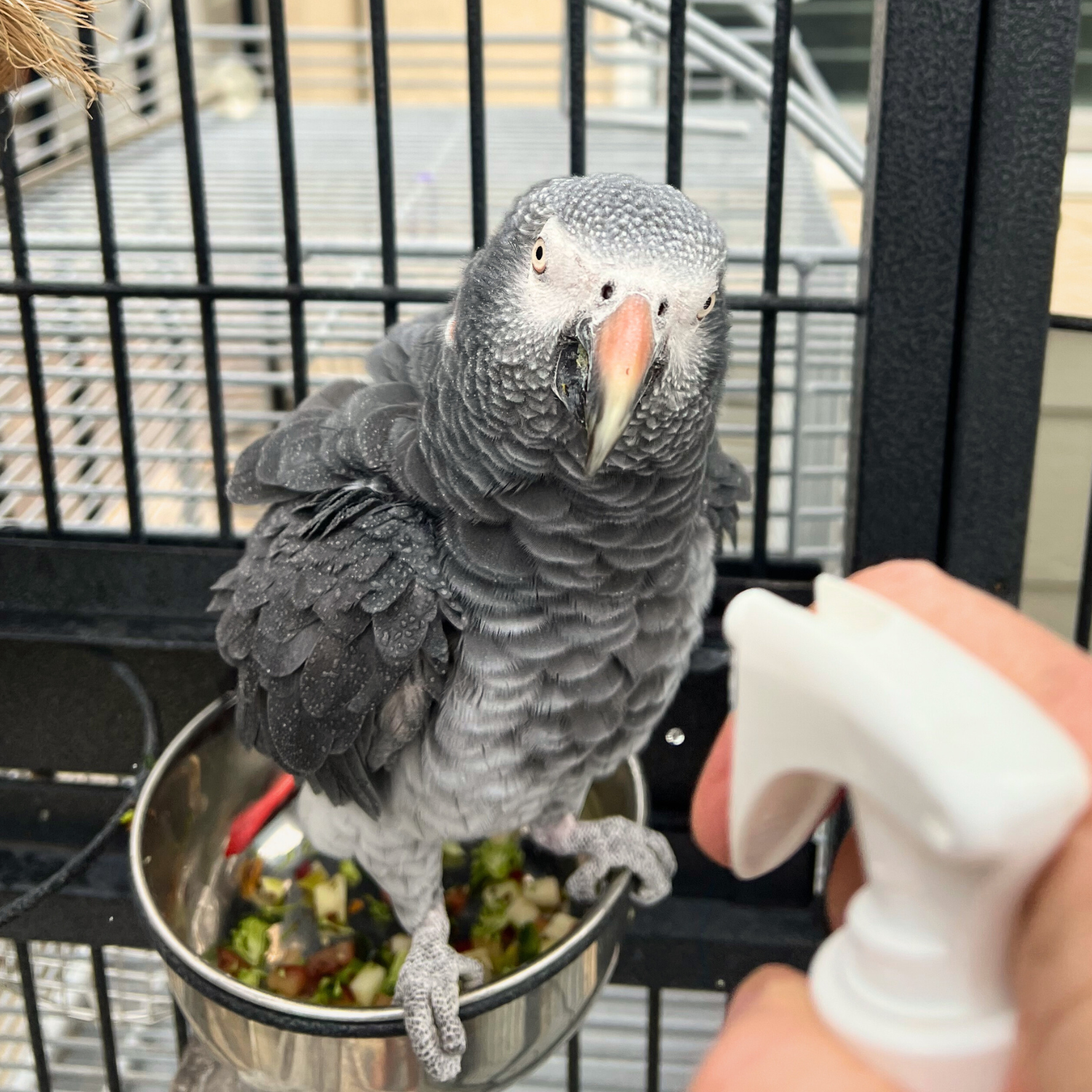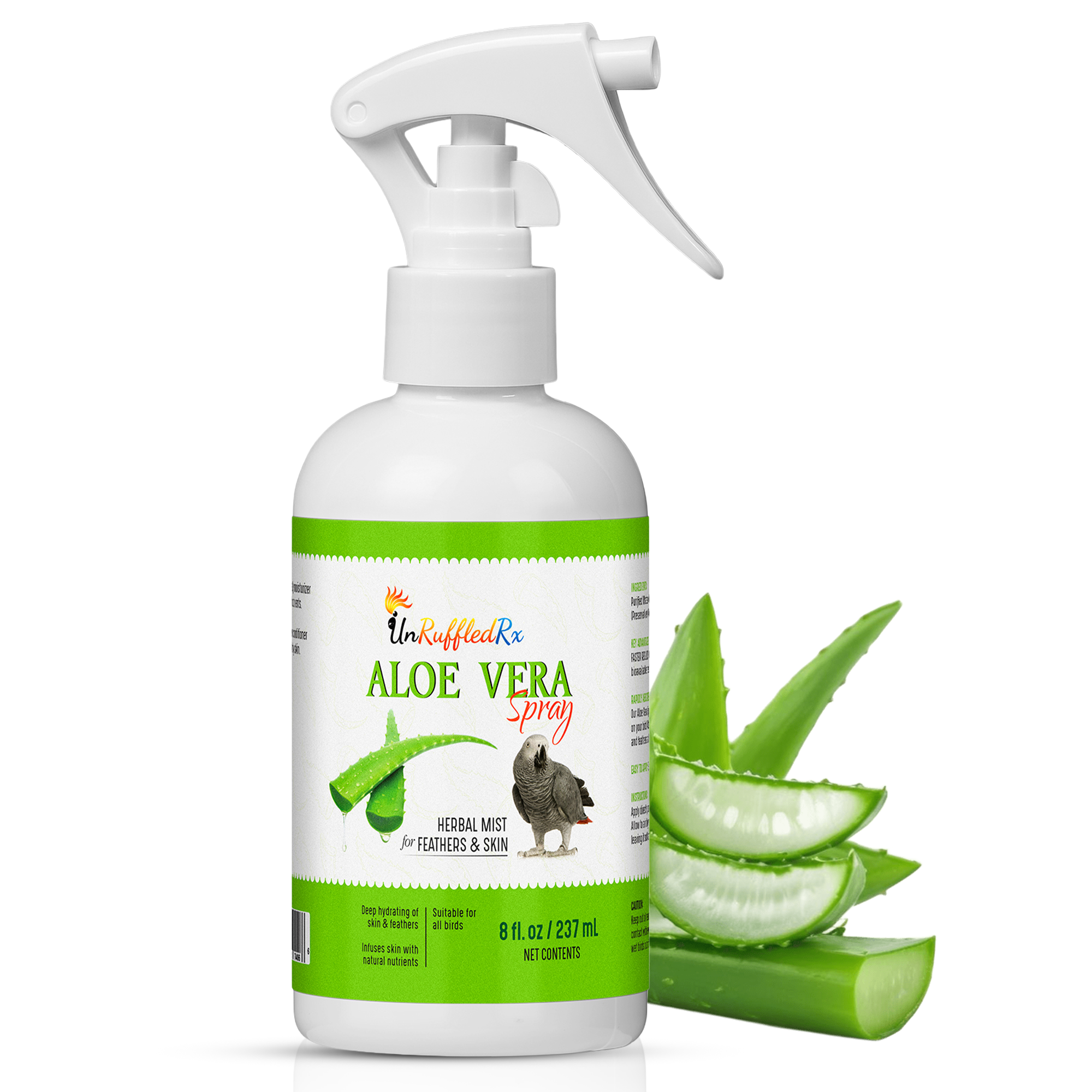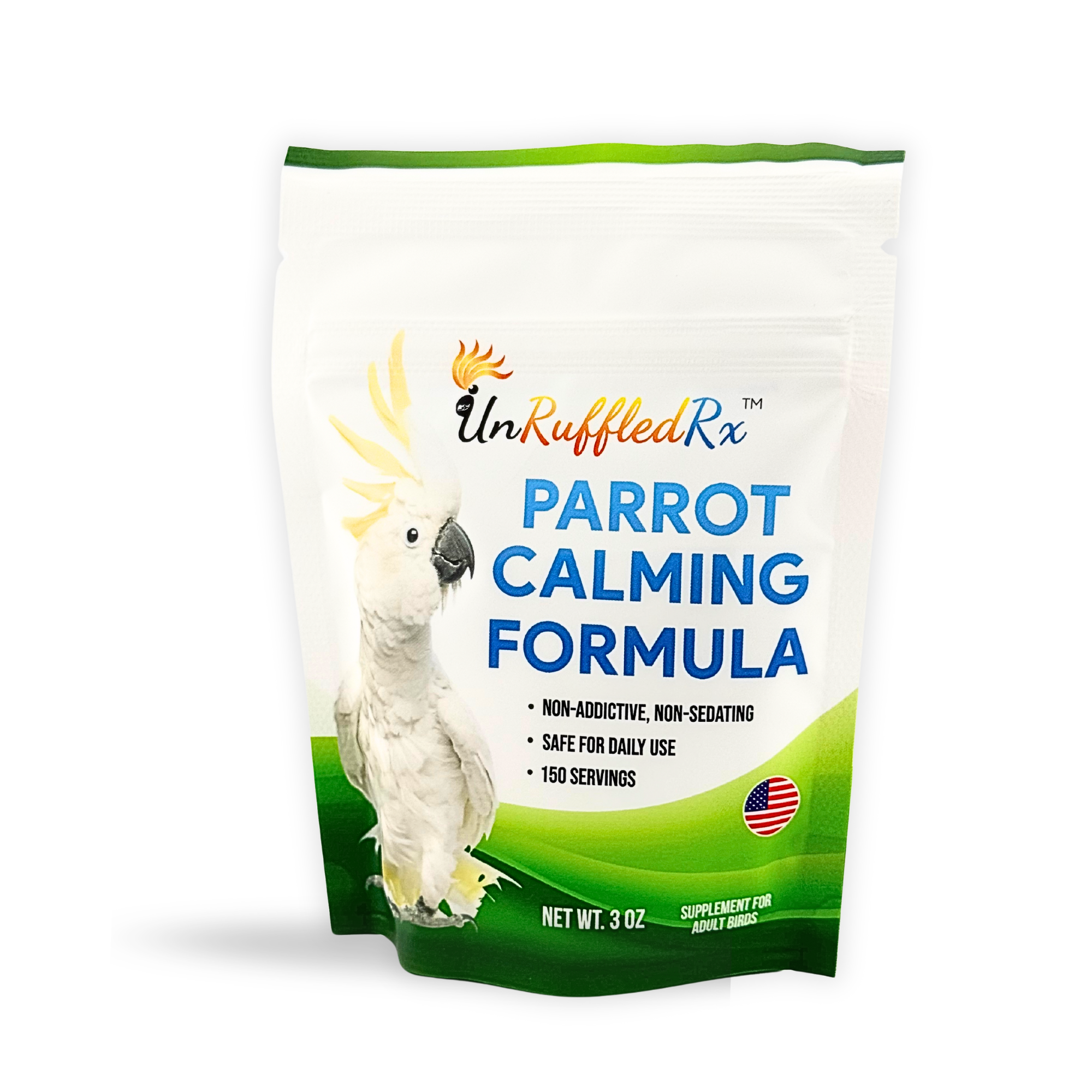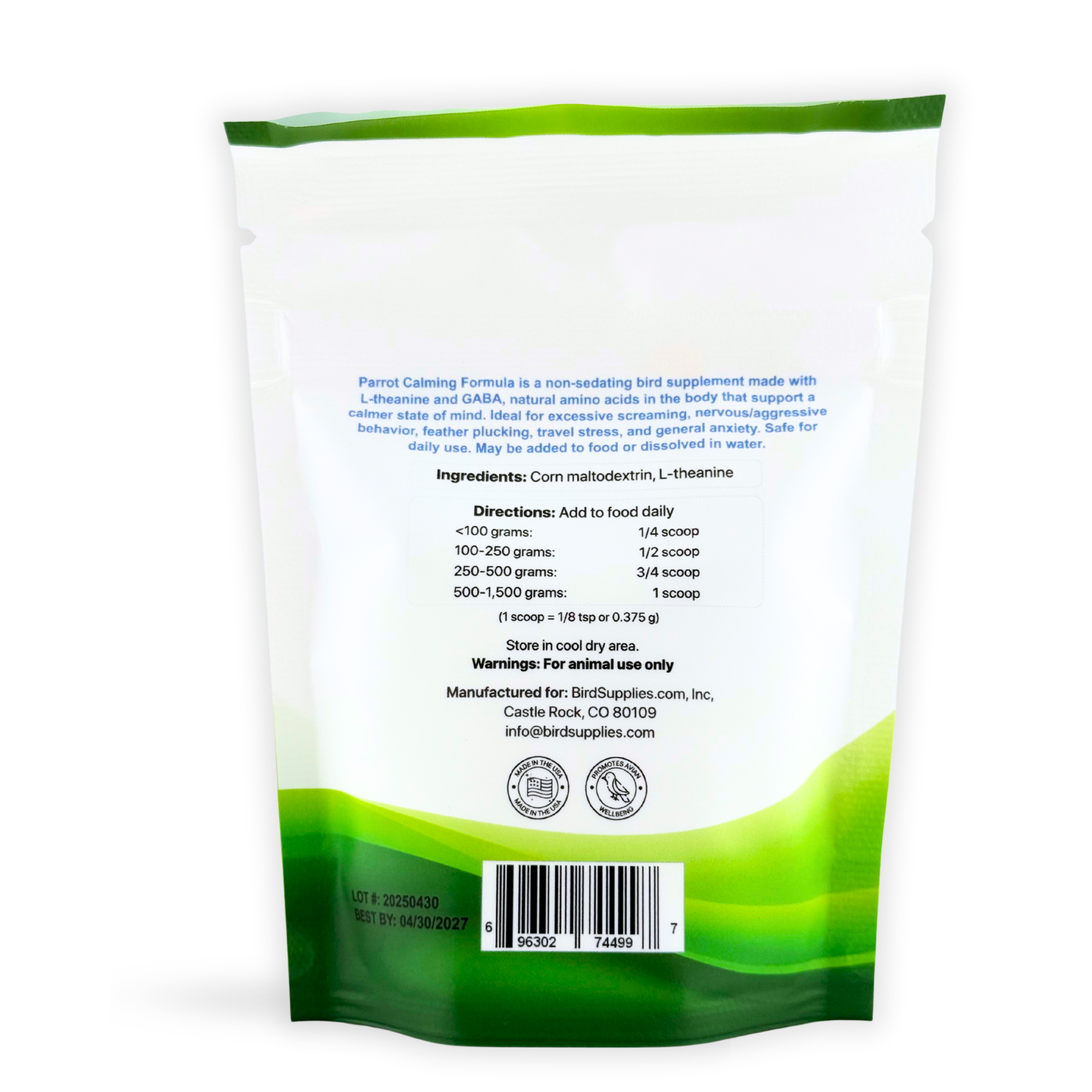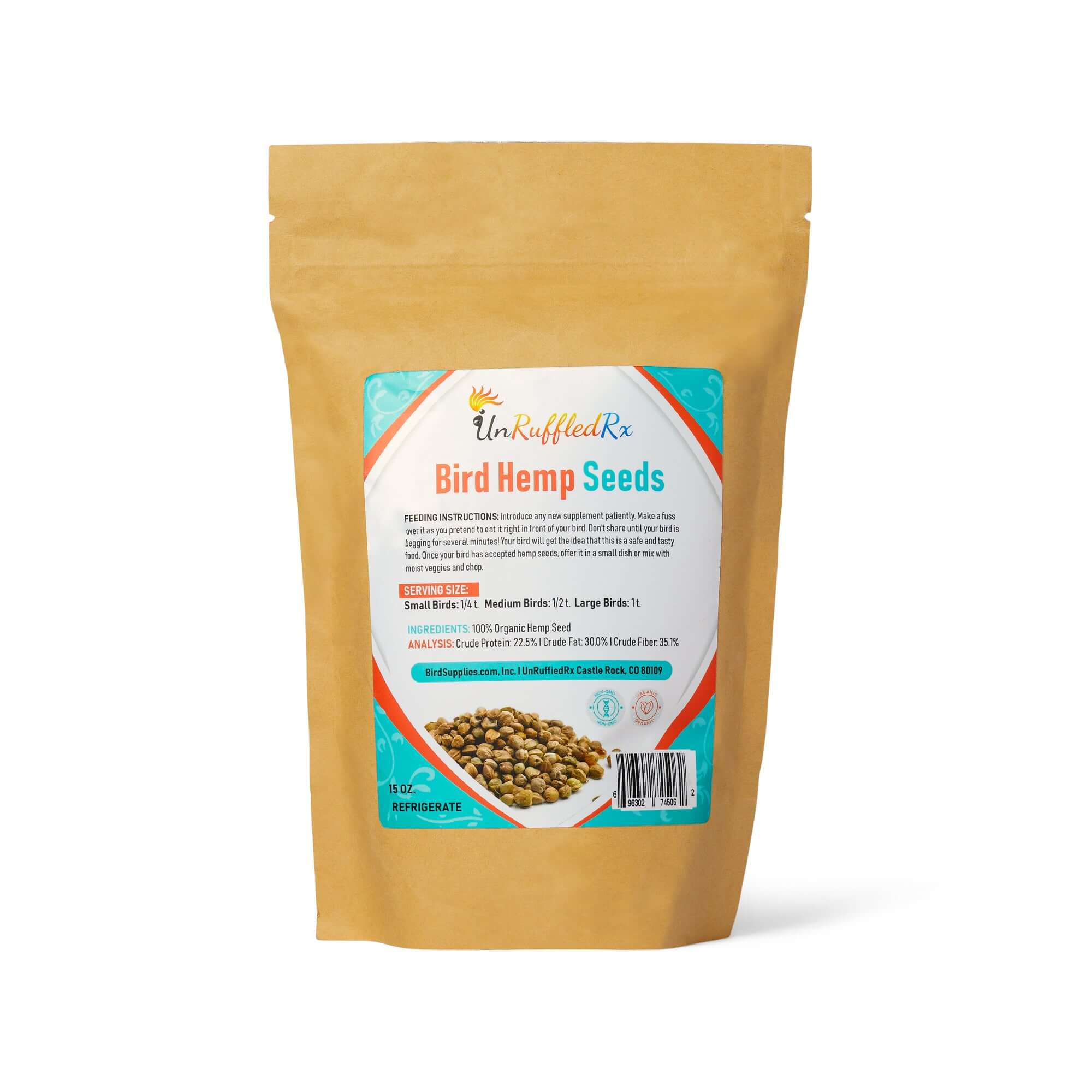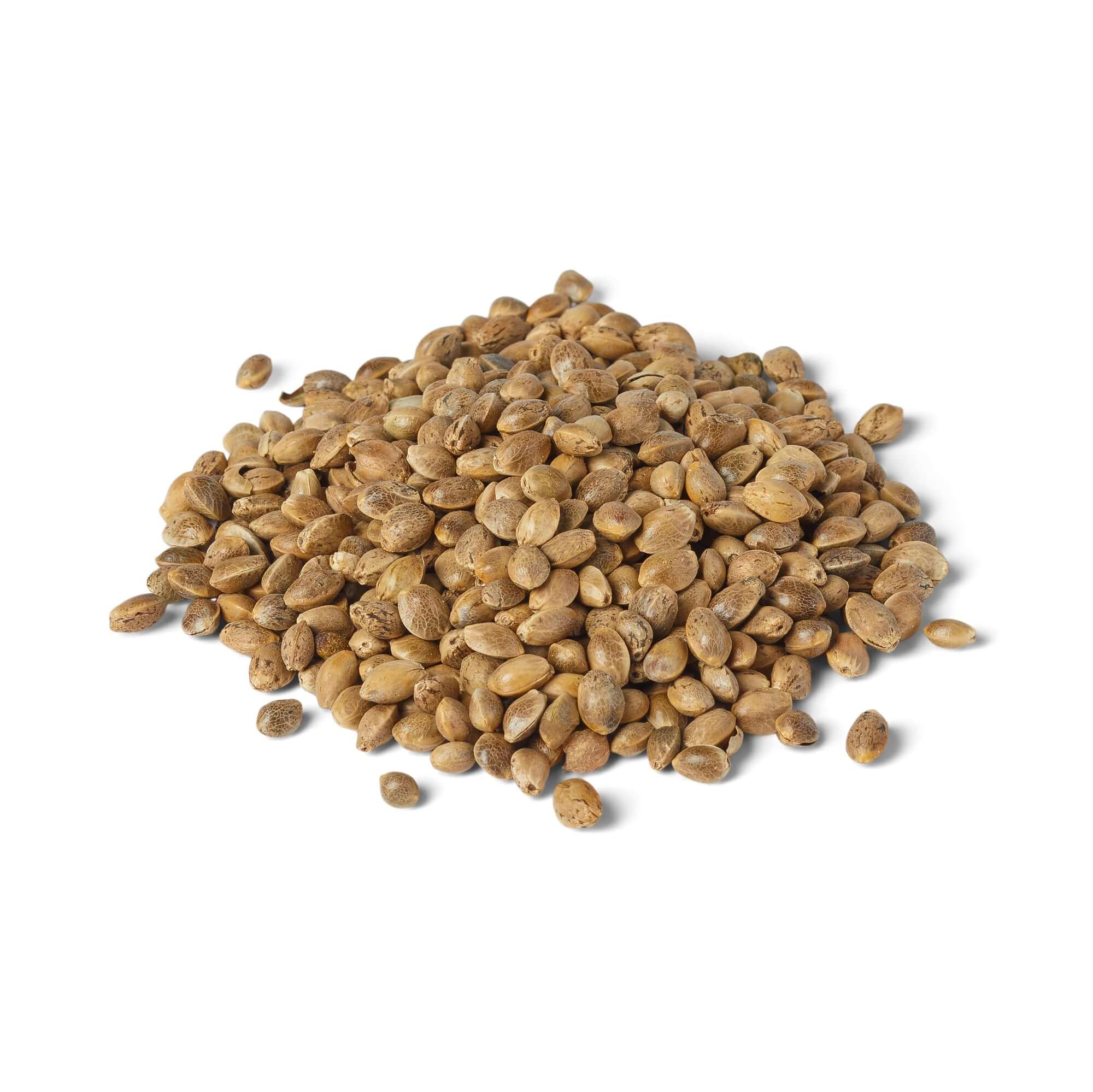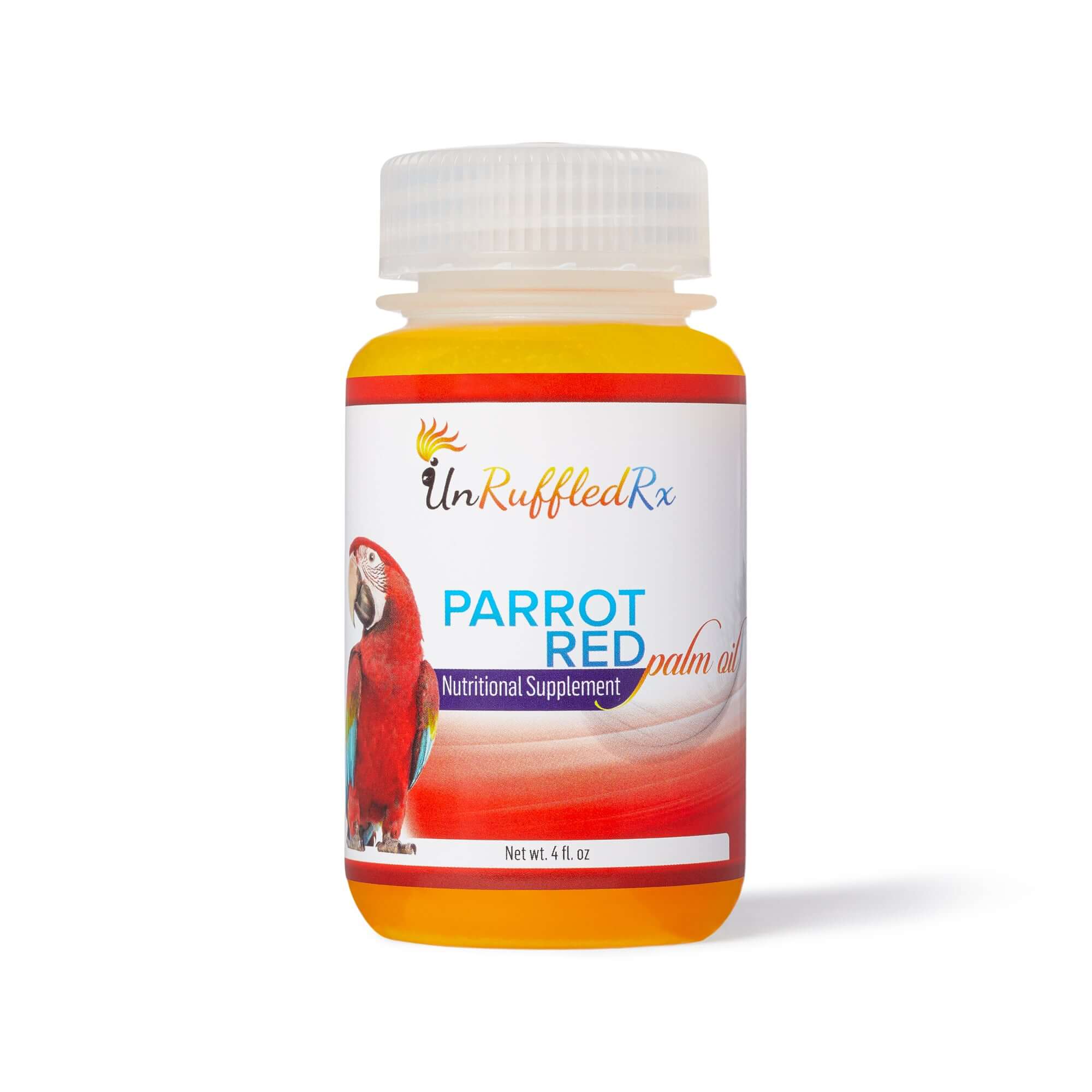- Why Bathing is Vital for Birds
- How to Master Bathing a Bird: 3 Fun and Easy Techniques
- Tips for Bathing a Cockatiel, Parakeet & Other Small
- Bathing Tips for Medium to Large Birds: Mimicking the Wild
- Safety Tips for Bathing Your Bird
- FAQ's
- Conclusion
Bathing is an essential part of your bird’s health and hygiene. In this guide, we’ll explore the importance of bathing, how to make it enjoyable for your bird, and tips for keeping them clean and happy.
Why Bathing is Essential for Your Bird 🚱🐦
Bathing is essential for your bird’s health and comfort, helping to keep their feathers clean, their skin healthy, and their mood uplifted. Here are the top benefits of regular baths for your feathered friend:
-
Promotes Healthy Preening ✨
Bathing encourages proper preening, keeping feathers smooth and shiny. It also prevents over-preening, which can lead to feather damage or stress plucking. -
Keeps Them Feeling Fresh 🌧️
In the wild, birds bathe in rain or streams and learn from their parents to enjoy the clean feeling. Once your bird gets used to it, they’ll love the sensation of fresh, soft feathers! -
Reduces Irritation 🛡️
Bathing removes dirt, dander, and oils, soothing your bird’s skin—especially for species that produce a lot of feather dust. -
Boosts Mood and Behavior 💃
A clean bird is a happy bird! Bathing can reduce stress and help prevent unwanted behaviors like feather plucking. -
Easier Cleaning for You 🌪️
Bathing benefits you too! Feather barbs and dust that would otherwise float around your home go straight down the drain, leaving you with a cleaner space. -
Prevents Dust Build-Up 🗑️
Powder-down birds like African Grey's and Cockatoos produce fine, oily dust. Regular baths prevent it from clumping on their skin, which can cause irritation or discomfort.
By making bathing a positive experience, you’ll help your bird stay clean, healthy, and happy. With a little patience and the right method, bath time can become a favorite part of your bird’s routine!
Not all birds take to bathing naturally, especially if they’ve had negative experiences with water, like being punished with sprays. However, bathing is essential for their health and comfort, so it’s worth finding a method they enjoy. Here are three popular and gentle ways to encourage your bird to embrace bath time.
How to Master Bathing a Bird: 3 Fun and Easy Techniques
1. Misting Your Bird with a Spray Bottle
Misting is a fantastic way to keep birds clean, especially for small to medium-sized species like parakeets, cockatiels, and conures. These birds often prefer the fine, gentle spray of a mist to the heavier droplets of a shower or bath.
Larger birds, like African Grey's or Cockatoos, may also enjoy misting, particularly when they’re not accustomed to direct baths. The light spray mimics the natural experience of rain, making it a comfortable and soothing option for many feathered friends.
Birds love fine mist sprayers because they closely replicate the sensation of natural rain, which helps them cool down, clean their feathers, and encourage preening. The fine droplets settle gently on their feathers, making the experience enjoyable and non-threatening. Additionally, misting hydrates their skin and supports healthy feather maintenance without overwhelming them with too much water at once.
Not all topical bird sprays are harmful, but it’s crucial to choose ones made with simple, recognizable ingredients. Birds ingest whatever is on their feathers when they preen, so sprays with harsh chemicals or unpronounceable additives can pose serious health risks. If you wouldn’t feel safe using it on your own skin, it’s likely not safe for your bird.
Look for sprays with natural, bird-safe ingredients tailored to your bird’s needs, like soothing aloe vera for dry, itchy skin or calming chamomile for stress. A quick check of the label can make all the difference. Prioritizing quality ensures you’re supporting your bird’s health and well-being without adding unnecessary worry.
If your bird is new to misting, you can use positive reinforcement to make the experience stress-free and enjoyable. Follow these steps to train your bird to love misting:
- Show the Bottle: Let your bird see the spray bottle and inspect it if they’re curious. This helps reduce fear of the unknown.
- Spray Your Hand First: Spray your hand with the mist in front of your bird so they can hear the sound and see that it’s harmless.
- Act Like It’s Fun: Pretend to enjoy the mist yourself! Smile, laugh, and make it clear that misting is a positive experience.
- Start Slow: Spray the mist once near your bird (not directly at their face) and immediately offer a treat and verbal praise.
- Repeat and Reward: Gradually increase the number of sprays while continuing to reward with treats and praise to build positive associations.
With patience and repetition, your bird will begin to look forward to misting sessions as a relaxing and enriching activity. By making it a positive experience, misting can become an enjoyable part of your bird's routine and strengthen the bond you share.
2. Shower Perch Bathing: A Soothing Soak for Larger Bird
Shower perch bathing is ideal for medium to large birds, like African Grey's and Cockatoos, who enjoy a full-body soak. The larger water droplets can feel refreshing, mimicking rain in the wild. However, for some birds, it might feel overwhelming—like a thunderstorm—if the water pressure is too strong. Using a gentle flow and warm water makes the experience soothing and enjoyable.
|
🔥 Hot Tip: |
Training Your Bird to Love the Shower
- Set Up the Perch: Attach a secure perch inside the shower where your bird feels stable. Position the perch away from the direct shower stream, allowing smaller droplets or gentle splashes from the water's edges or your body to softly reach your bird.
- Introduce the Sound: Let your bird perch calmly, then briefly turn on the water at a gentle flow. Reward them for staying relaxed.
- Try Gentle Droplets: Adjust to lukewarm water and let light droplets fall near your bird. Offer treats and praise.
- Model the Fun: Show your bird how enjoyable it is by standing under the water and acting playful.
- Increase Gradually: As your bird becomes more comfortable, let the water gently flow over them, rewarding calm behavior.
3. Shallow Bowl Bathing: A Natural and Fun Bird Bathing Option
Using a shallow bowl for bathing mimics the experience of splashing in a puddle, much like birds would in the wild. This method is especially enriching for birds that enjoy playing and exploring water at their own pace. Adding fun elements, like a cat water fountain to simulate a gentle stream, or floating leafy greens like kale, can make the experience even more engaging and entertaining for your bird.
- Choose the Right Bowl: Select a shallow dish with lukewarm water and place it in a safe, familiar area.
- Add Curiosity Triggers: Float leafy greens or let the "cat water dish" fountain trickle to spark your bird’s interest.
- Model bathing for your bird to observe: Dip your fingers into the water or splash gently to show them it’s safe and fun.
- Let Them Explore: Allow your bird to approach at their own pace. Some may only observe the first few times.
- Reinforce with Treats & Praise: When they show curiosity or begin to splash, offer treats and praise to encourage the behavior.
Tips for Bathing A Cockatiel, Parakeet Or Other Small Birds
Why Showering Isn't Ideal for Small Birds
Bathing small birds like budgies or cockatiels requires extra care because their delicate bodies can’t handle heavy water droplets from a shower.
I learned this the hard way with my sweet cockatiel, Dusty. One day, while trying a shower perch, she slipped and fell after being knocked off balance by the large droplets, breaking her leg. It was a heartbreaking lesson, and now I always recommend gentler options.
Better Bathing Options for Small Birds
1. Leafy Green Baths: Scatter wet, leafy greens like kale or collard greens in a shallow dish. Birds can nibble, climb, and splash, combining play and nutrition in one activity. This mimics how wild birds forage for food while bathing in dew-covered plants.
2. Misting Playtime: Use a fine mist spray to create a gentle, rain-like experience. Hang a bird-safe toy or perch nearby to encourage your bird to interact with the water as it falls. Many small birds find misting soothing and will flap their wings excitedly, turning bath time into an energetic, fun moment.
3. Bird Fountain Fun: A small pet water fountain can simulate a gentle stream, offering a sensory-rich environment for your bird. The sound of flowing water can pique their curiosity, encouraging them to splash and play safely. Always supervise to ensure your bird doesn’t drink excessively from the fountain.
Interactive bathing experiences like these engage your small bird’s natural behaviors while keeping their delicate feathers clean and healthy. With patience and creativity, bath time can become a favorite part of your bird’s day! 🐦💧
Bathing Tips for Medium to Large Birds: Mimicking the Wild
How Medium to Large Birds Bathe in the Wild
In the wild, birds like conures, African Grey's, and macaws often bathe in rain showers, shallow streams, or by splashing in puddles. They use their strong beaks and wings to spread water across their feathers, keeping them clean and hydrated. This natural behavior not only maintains healthy plumage but also provides enrichment and relaxation.
Creating Safe Bathing Experiences at Home
You can recreate these natural bathing conditions at home by offering a range of safe and enjoyable options.
Shower perches are ideal for larger birds who enjoy a gentle rain-like stream. Place the perch outside the direct water flow so droplets land softly, or use a mist setting on a hose for outdoor fun.
For conures and African Grey's, a shallow tub or large bowl with lukewarm water can mimic a stream or puddle, especially if you add floating toys or leafy greens for enrichment.
Tips for Stress-Free Bathing
Introduce your bird to these bathing options gradually. Start with a small amount of water and let them explore at their own pace. Always monitor their comfort and safety, ensuring the water is lukewarm and the environment is free of drafts. With time, most medium to large birds come to love the refreshing feel of a well-planned bath, just like they would in the wild!
Safety Tips for Bathing Your Bird
Avoid Chills and Drafts: Birds are sensitive to temperature changes, so always use lukewarm water for bathing and ensure the room is warm and draft-free. A chilled bird can quickly become ill, especially smaller species. Keep them in a warm environment until completely dry.
- Never Bathe a Sick Bird: If your bird shows signs of illness, like lethargy or puffed-up feathers, avoid bathing them to reduce stress. Instead, keep them warm and consult a vet. Learn how to tell if your bird is sick for more tips.
- Is Blow Drying Your Bird Safe? Blow drying is not recommended, as high heat and strong airflow can damage delicate feathers and skin. Gently pat your bird dry with a soft towel and let them air-dry in a warm, draft-free room.
- Don’t Put Your Bird to Bed Wet: Ensure your bird is completely dry before bedtime. Damp feathers can lead to chills and discomfort. Allow plenty of drying time before their usual sleep routine.
- When to Use Shampoos: Use shampoos only when necessary to remove stubborn substances from feathers. Choose bird-safe shampoos with a neutral pH to avoid irritating their skin and stripping natural oils.
- Watch Out for Chemicals: Be cautious with bird sprays. If the ingredients are hard to pronounce, think twice about using them, as your bird may ingest harmful chemicals while preening. Opt for natural options like aloe vera spray for safety and health.
Bird Bathing FAQ
Table of Contents
- General Bird Bathing Basics
- Encouraging Bathing
- Bathing Methods
- Health and Safety
- Behavioral and Environmental Concerns
🛁 General Bird Bathing Basics
Most birds benefit from bathing 1–3 times a week, but powder-down species like cockatoos or African Greys may need daily baths to manage dust.
Morning or early afternoon is ideal, so your bird has plenty of time to dry before bedtime.
Yes, all birds benefit from bathing to keep their feathers and skin healthy, though the frequency and method depend on the species.
Tap water is generally safe unless it has high chlorine levels. If concerned, use filtered or room-temperature bottled water.
🌟 Encouraging Bathing
Start with misting from a distance and reward calm behavior with treats. Gradually introduce more water as they grow comfortable.
Use lukewarm water, mimic rain with a gentle mist, and add fun elements like leafy greens or floating toys. Always praise and reward your bird after bathing.
Place them on a secure shower perch outside the direct stream. Let small droplets or mist reach them, and reward them for staying calm.
🚿 Bathing Methods
It depends on the bird. Small birds prefer misting or shallow dishes, while larger birds often enjoy showers with gentle droplets.
The water should only cover their feet—around 1–2 inches for small birds and slightly deeper for larger birds.
Yes, as long as it’s warm, there’s no wind, and your bird is supervised. Outdoor baths mimic their natural environment.
Absolutely! Pet-safe water fountains mimic streams, and wet greens like kale or spinach offer enrichment and a playful way to bathe.
🩺 Health and Safety
Move them to a warm, draft-free room and gently towel-dry them. Never place them under direct heat or use a blow dryer.
Yes, bathing helps soften the skin and loosen old feathers, making molting more comfortable.
Yes, but ensure the room is warm, use lukewarm water, and dry your bird thoroughly to prevent chills.
Only use bird-safe shampoos if absolutely necessary, such as to remove sticky substances. Avoid human soaps, as they can harm feathers and skin.
Use a bird-safe shampoo or mild, unscented dish soap diluted with warm water. Rinse thoroughly and dry gently.
🌍 Behavioral and Environmental Concerns
Yes, it’s instinctual. Provide a shallow bath or misting to give them a safer option for bathing.
Definitely! Bathing removes dust and dander, keeping feathers clean and reducing airborne particles in your home.
Lack of bathing can lead to clumped dust, irritated skin, poor feather quality, and increased stress.
Introduce bathing gradually, use positive reinforcement, and ensure the water temperature and environment are comfortable and safe.
In this article, we’ve covered everything you need to know about safely bathing your bird, from choosing the right methods to creating a stress-free experience. Bathing is essential for your bird’s health, but it’s all about doing it right. Ready to become a pro at bird bathing? Dive into the full article for expert tips and tricks!
Related Posts:
The Ultimate Guide To Bathing a Bird
Bathing a Bird: Easy Tips for a Clean, Happy Feathered Friend
Managing Cockatoo Dander and Cockatiel Dust
5 Do's And Don'ts With Your Exotic Bird Care This Winter
Daily, Weekly and Monthly Bird Care Plan: Printable Bird Care Guide
References:
Basic Bird Care found in https://hari.ca/avian-care/bathing-showering-an-essential-in-basic-bird-care/; n.a., n.d.
Murphy, S. M., Braun, J. V., & Millam, J. R. (2011). Bathing behavior of captive Orange-winged Amazon parrots (Amazona amazonica). Applied Animal Behaviour Science, 132(3–4), 200–210. https://doi.org/10.1016/j.applanim.2011.04.010
Link to this blog
Burroughs, D. (2025, January 14). Bathing a bird: Easy tips for a clean, happy feathered friend. BirdSupplies.com. https://birdsupplies.com/blogs/news/bathing-a-bird-easy-tips-for-a-clean-happy-feathered-friend
Diane Burroughs, LCSW, is a licensed psychotherapist specializing in avian anxiety disorders, nervous bird behaviors, and overall bird care. With training in ABA therapy and certification in Nutrition For Mental Health, Diane has authored several books on bird behavior and offers expert consultations for resolving issues like feather plucking and bird anxiety.
Her work has been featured in the Journal of Avian Medicine and Surgery and presented at Exoticscon. Diane also mediates the Feather Plucking Help group on Facebook, offering support to parrot owners. With over 30 years of experience, Diane has developed thousands of successful individualized behavior plans, promoting parrot wellness and excellent bird care.
TAGS: #BirdBathing #BathingABird #BathingACockatiel
SHARING IS CARING! 🗣
Love what you read? Help spread the word on Facebook & Instagram 🌟
💬 Leave a comment below and let us know your thoughts!

